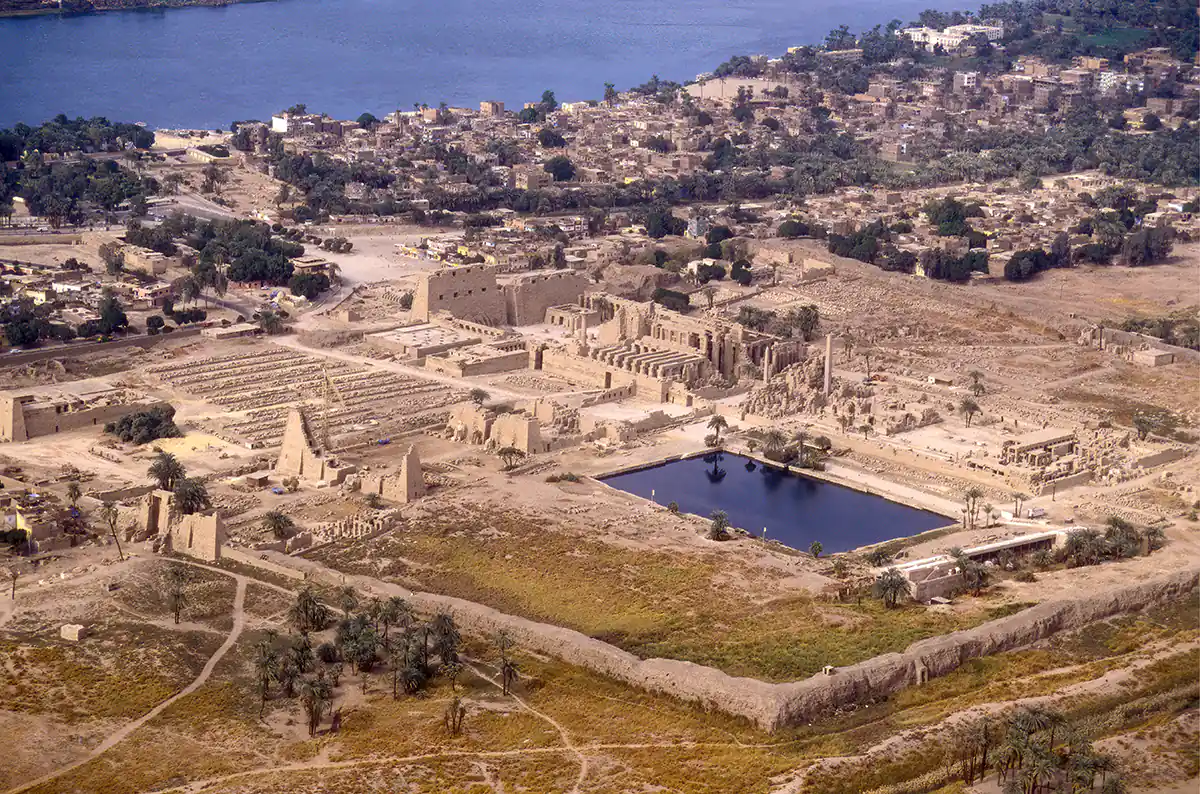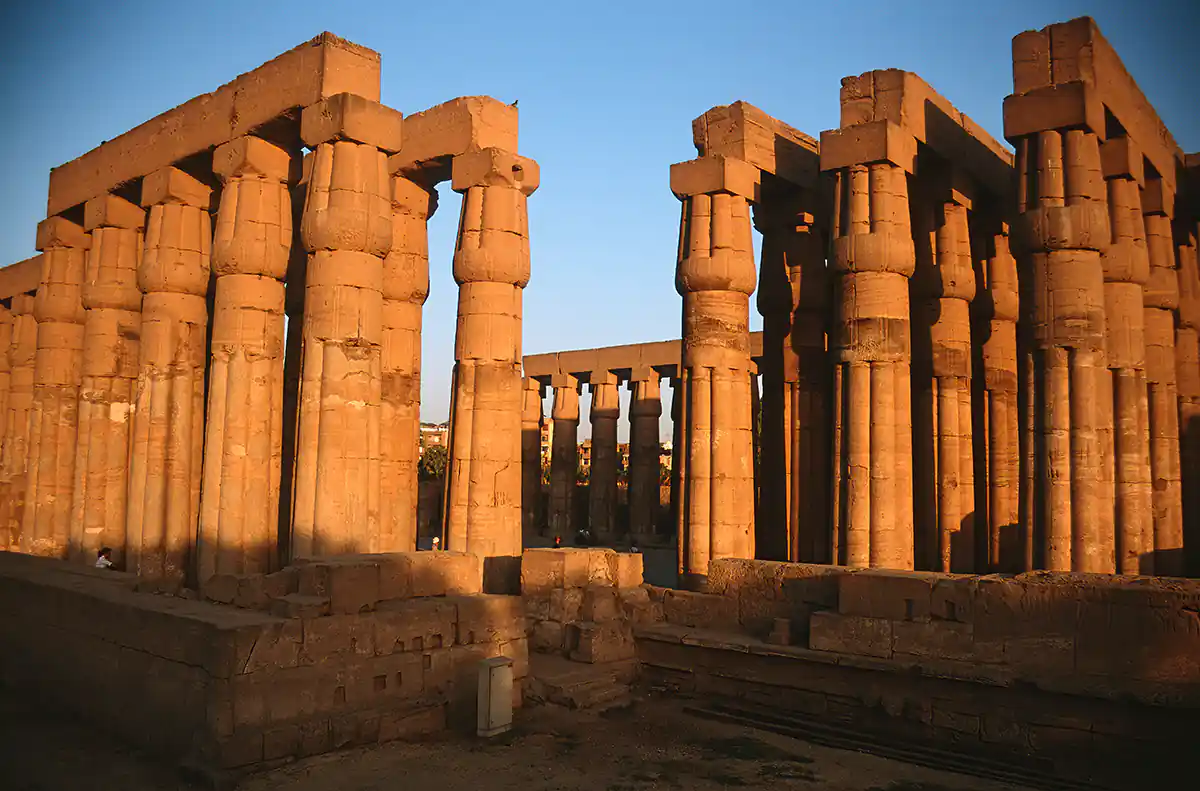Karnak
Karnak: An Enduring Legacy of Ancient Egyptian Splendor
In the heart of Upper Egypt, along the Nile's eastern bank, lies the extraordinary architectural marvel known as Karnak (pictured above). This vast temple complex is a testament to ancient Egypt's grandeur, bearing the marks of countless pharaohs and dynasties. Its name derives from the Greek 'Thebai' and the Arabic 'Al-karnak,' each echoing its historical significance. Karnak, known initially as Waset by the Egyptians, was a vibrant social hub, yet the magnificent temples are the only structures that withstood the test of time.
Karnak's rich history stretches back to around 3200 BC, revealing its evolution from a modest Nile-side settlement. However, its true architectural prominence emerged during the Middle Kingdom, a period of continuous construction and renovation. The central temple, dedicated to the revered state god Amon, was meticulously aligned to harness the setting sun's light during the summer solstice. This celestial design underscores the profound connection ancient Egyptians held with the cosmos.
The enduring allure of Karnak lies not only in its sacred spaces but also in the sacred objects that graced its halls. While time may have eroded many of these treasures, their legacy lingers. Statues portraying the likenesses of gods and pharaohs, their forms imbued with divine power and authority, would have adorned the temple's chambers. Intricately carved obelisks piercing the heavens served as testaments to the gods and the might of the rulers who commissioned them. Within the temple's sanctuaries, priests would have conducted elaborate rituals using sacred instruments, their actions believed to maintain the delicate balance of the universe.
The temple complex bears witness to the changing astrological cycles that profoundly influenced the ancient Egyptians. The systematic dismantling of the temple of Montu and the subsequent rise of Amon's temple mirrored the astronomical shift from the age of Taurus to Aries. This act reflects a deep understanding of the intricate relationship between the earthly realm and the celestial movements.
Karnak's significance extended beyond its architectural and religious grandeur, as it was a paramount pilgrimage destination. Grand festivals and processions drew devotees from far and wide, their journeys a testament to their unwavering faith. Imagine the spectacle of crowds thronging the temple's courtyards, their voices rising in chants and prayers. The air would have been thick with the scent of incense, offerings laid before the gods, and the rhythmic beating of drums leading the procession. These pilgrimages were not merely acts of devotion; they were a means to connect with the divine, to seek blessings, and to reaffirm one's place within the cosmic order.
Karnak is a magnificent emblem of spiritual devotion, architectural ingenuity, and timeless reverence in the tapestry of ancient Egyptian civilization. Though its houses, palaces, and bustling markets have faded, the temples remain, whispering tales of a glorious past. Even today, Karnak continues to captivate visitors and scholars alike, inviting them to walk amidst the echoes of an extraordinary era and experience the profound legacy of this sacred site.

Martin Gray is a cultural anthropologist, writer and photographer specializing in the study of pilgrimage traditions and sacred sites around the world. During a 40 year period he has visited more than 2000 pilgrimage places in 160 countries. The World Pilgrimage Guide at sacredsites.com is the most comprehensive source of information on this subject.


